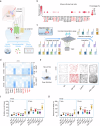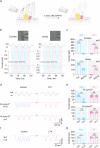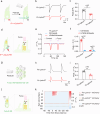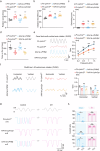A force-sensitive adhesion GPCR is required for equilibrioception
- PMID: 39966628
- PMCID: PMC11958651
- DOI: 10.1038/s41422-025-01075-x
A force-sensitive adhesion GPCR is required for equilibrioception
Abstract
Equilibrioception (sensing of balance) is essential for mammals to perceive and navigate the three-dimensional world. A rapid mechanoelectrical transduction (MET) response in vestibular hair cells is crucial for detecting position and motion. Here, we identify the G protein-coupled receptor (GPCR) LPHN2/ADGRL2, expressed on the apical membrane of utricular hair cells, as essential for maintaining normal balance. Loss of LPHN2 specifically in hair cells impaired both balance behavior and the MET response in mice. Functional analyses using hair-cell-specific Lphn2-knockout mice and an LPHN2-specific inhibitor suggest that LPHN2 regulates tip-link-independent MET currents at the apical surface of utricular hair cells. Mechanistic studies in a heterologous system show that LPHN2 converts force stimuli into increased open probability of transmembrane channel-like protein 1 (TMC1). LPHN2-mediated force sensation triggers glutamate release and calcium signaling in utricular hair cells. Importantly, reintroducing LPHN2 into the hair cells of Lphn2-deficient mice restores vestibular function and MET response. Our data reveal that a mechanosensitive GPCR is required for equilibrioception.
© 2025. The Author(s).
Conflict of interest statement
Competing interests: The authors declare no competing interests.
Figures









References
-
- Eatock, R. A. & Songer, J. E. Vestibular hair cells and afferents: two channels for head motion signals. Annu. Rev. Neurosci.34, 501–534 (2011). - PubMed
-
- Hudspeth, A. J. The cellular basis of hearing: the biophysics of hair cells. Science230, 745–752 (1985). - PubMed
-
- Douguet, D. & Honore, E. Mammalian mechanoelectrical transduction: Structure and function of force-gated ion channels. Cell179, 340–354 (2019). - PubMed
MeSH terms
Substances
LinkOut - more resources
Full Text Sources
Research Materials
Miscellaneous

